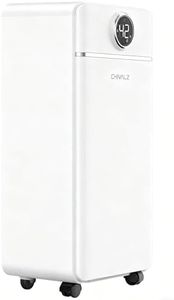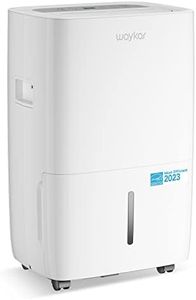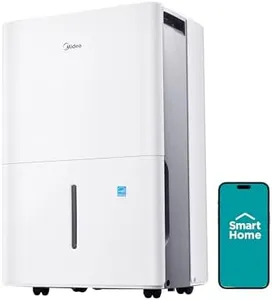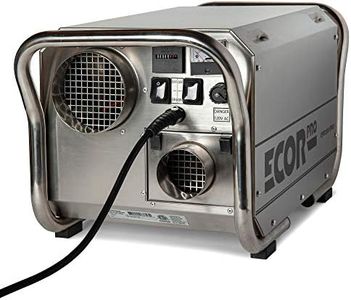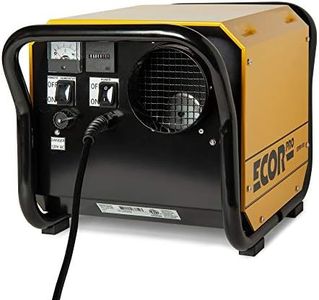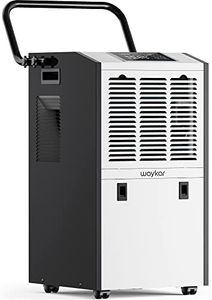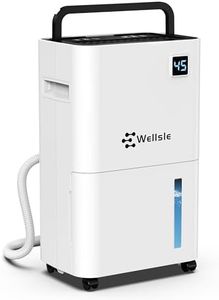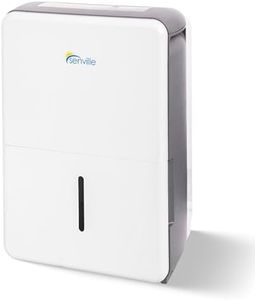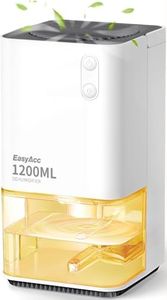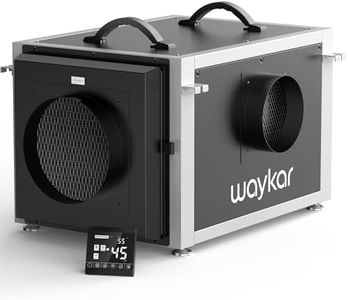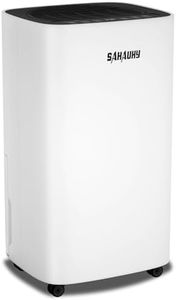We Use CookiesWe use cookies to enhance the security, performance,
functionality and for analytical and promotional activities. By continuing to browse this site you
are agreeing to our privacy policy
10 Best Garage Dehumidifiers
From leading brands and best sellers available on the web.Buying Guide for the Best Garage Dehumidifiers
Choosing the right garage dehumidifier is all about matching the device to your space and your needs. Garages can be prone to excess moisture, which can lead to mold, rust, and damage to your belongings. A good dehumidifier helps maintain a healthy humidity level, protecting your tools, vehicles, and stored items. When shopping, focus on the main features that affect performance, convenience, and suitability for your garage environment.Capacity (Pint Removal per Day)Capacity refers to how much moisture the dehumidifier can remove from the air in a 24-hour period, usually measured in pints. This is important because a higher capacity means the unit can handle larger or damper spaces more effectively. Small capacity units (20-30 pints) are suitable for smaller or less damp garages, while medium (30-50 pints) and large (50+ pints) capacities are better for bigger or very humid garages. To pick the right one, consider the size of your garage and how damp it gets—larger, wetter spaces need higher capacity units.
Coverage AreaCoverage area tells you the maximum square footage the dehumidifier is designed to handle. This is crucial because using a unit that's too small for your garage will make it work harder and less efficiently. Coverage is usually divided into small (up to 500 sq ft), medium (500-1000 sq ft), and large (over 1000 sq ft) spaces. Measure your garage and choose a dehumidifier that matches or slightly exceeds your space for best results.
Drainage OptionsDrainage options refer to how the collected water is removed from the dehumidifier. Some units have a bucket you need to empty, while others offer continuous drainage with a hose. For garages, continuous drainage is often more convenient, especially if you don't want to check and empty the tank frequently. If your garage has a floor drain or you can route a hose outside, look for a model with a built-in pump or gravity drain option.
Operating Temperature RangeOperating temperature range is the span of temperatures in which the dehumidifier works efficiently. This matters because garages can get quite cold or hot, and not all dehumidifiers work well in low temperatures. Standard units work best above 65°F, while low-temperature models can operate in cooler conditions (as low as 41°F). If your garage gets cold, choose a unit rated for low temperatures to ensure it keeps working year-round.
Auto-Restart and Auto-DefrostAuto-restart means the dehumidifier will turn itself back on after a power outage, and auto-defrost prevents the coils from freezing in cold conditions. These features are important for garages because power interruptions and low temperatures are common. If you want a set-it-and-forget-it solution, look for both features to keep your dehumidifier running smoothly without constant attention.
Noise LevelNoise level is how loud the dehumidifier is when running, usually measured in decibels (dB). While garages are less sensitive to noise than living spaces, a quieter unit can still be important if you spend time working in your garage. Lower noise levels (below 50 dB) are less intrusive, while higher levels may be noticeable. Consider your tolerance for noise and how often you'll be in the garage when the unit is running.
